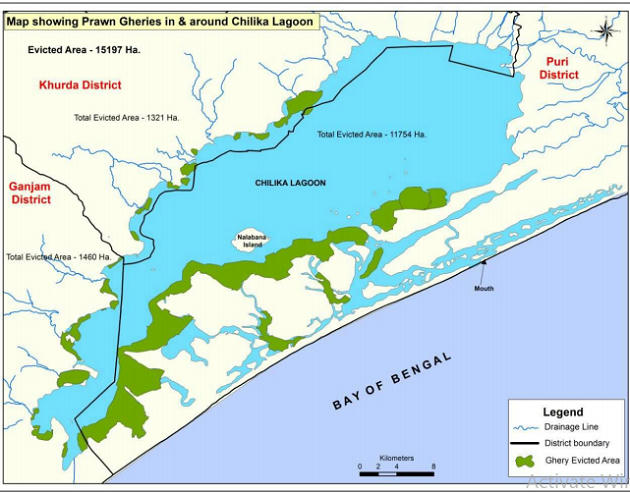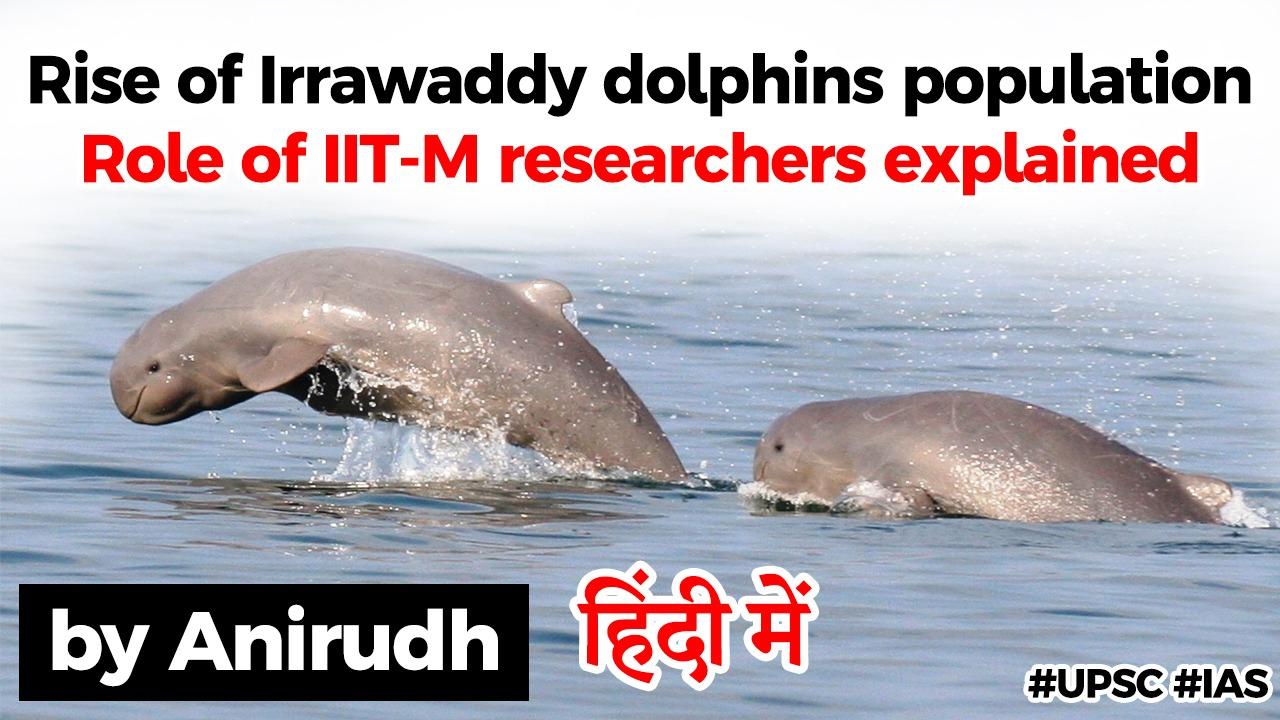Table of Contents

CHILIKA LAKE
- Chilika lake is a brackish water lagoon of Odisha on the East Coast Of India.
- It is the largest coastal lagoon in India.

CHILIKA LAKE AND IRRAWADDY DOLPHINS
- Rare Irrawaddy dolphins is a major attraction of this lake
- Irrawaddy dolphins are found in estuaries and rivers near coastal areas in South and Southeast Asia.
- Irrawaddy dolphins are categorized as endangered species in IUCN list

DREDGING
- Dredging is a process in which sand and silt deposits are removed from the bed of a water body to maintain its depth. Process of dredging involves four steps.
- Excavation of sand and silt deposited on the bed of a water body
- Removal of the excavated material to dredge vessel
- Transportation of excavated material to dumping site
- Dumping of transported material

IIT MADRAS CONTRIBUTION
- IIT Madras conducted few studies prior to the dredging process. These studies were:
- Satellite imagery study of chilka lake site to locate the site of excessive deposition(dredging site) and dumping site.
- Hydraulic study to understand the ecological impact of hydraulic dredger and selection of suitable dredger.
- Geotechnical study to understand the physical and mechanical properties of bed of chilka lake. It is used to estimate the dredging cost of the site.
SATELLITE IMAGERY STUDY OF CHILKA LAKE
- The two images (Figures 1 and 2) generated from the satellite imagery data of LANDSAT clearly indicate the shrinkage of the lake in the western and the north-eastern sides.
- The shrinking of the lake in the western part is because of the silting made by the rivers flowing from the Eastern Ghats.
- In the north-eastern side, numerous islands have been emerged which are made up of silt and sand-dunes carried out by the offshore long current from the Bay of Bengal

SATELLITE IMAGERY STUDY OF CHILKA LAKE
- The emergence of the new islands is constantly choking the 100-meter long mouth (Magarmukh) of the Chilika Lake to the Bay of Bengal.
- This reduces discharge of the silt to the Bay of Bengal and deposition of silt in western part. Which results into shrinking of lake in western part.
IMPACT OF REDUCTION IN SIZE OF THE MAGARMUKH
- Salinity of Chilika lake is dependent on
- Inflow of seawater from the Bay of Bengal flows into Chilika lake at high tide through a 35-km-long, narrow, zigzag channel, the Magarmukh. And
- Outflow of Excess freshwater from the rivers into the sea through the same Magarmukh
IMPACT OF REDUCTION IN SIZE OF THE MAGARMUKH
- Reduction in size of Magarmukh reduced the amount of seawater flowing into Chilika lake
- It reduced the salinity of Chilika lake
- Reduction in salinity resulted into degradation of peculiar brackish water ecosystem of Chilika lake

EFFECTS OF RESTORATION OF ECOSYSTEM
- Hydrological intervention of IIT Madras restored the ecosystem of Chilika lake, which affected the life in Chilika lake in the following manner
- Ecological impact
- Economic impact
- Social impact
ECOLOGICAL IMPACT
Restoration resulted into seven fold increase in fish production and three fold increase in population of highly threatened Irrawaddy dolphins in Chilika Lake.

ECONOMICAL IMPACT
- Increase in fish production enhanced the livelihood opportunity of fishing community of Chilika lake Increase in population of Irrawaddy dolphin promoted ecotourism.


ECONOMICAL IMPACT .
SOCIAL IMPACT
- The ecology of the shrinking Chilika lake threatened the livelihood of fishing community, farmers and traders.
- Serious law and orders problems started in Balbhadrapur, Alupatanam, Satapada, Panaspada villages over sharing in fishing resources of Chilika lake.
- Restoration and increase in fishing have subsided these law and order problems.
Latest Burning Issues | Free PDF






















 WhatsApp
WhatsApp